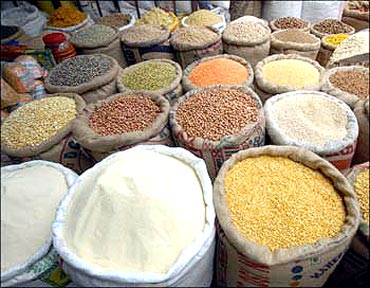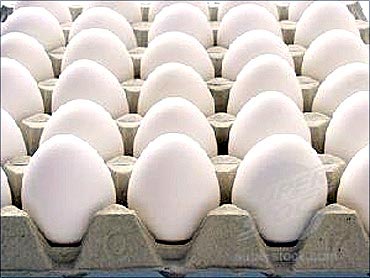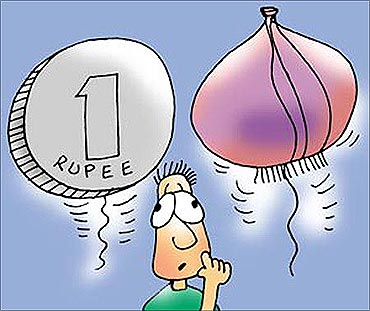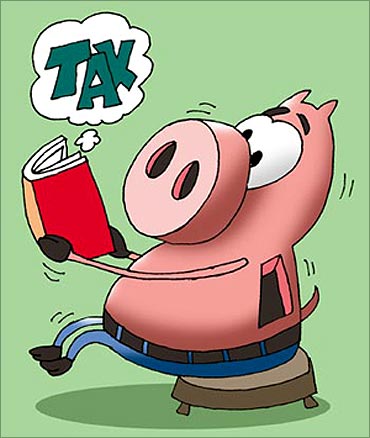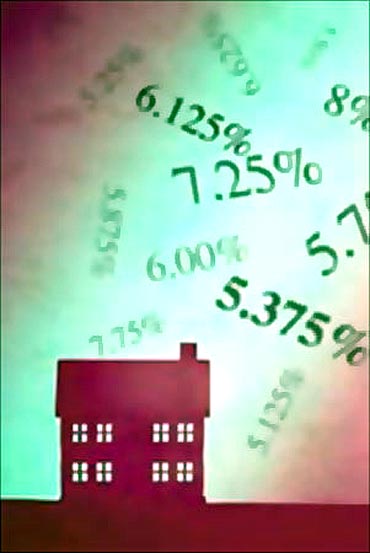 | « Back to article | Print this article |
Balancing growth and inflation
The high level of inflation in the last two years has raised certain questions about the relationship between inflation and growth.
The issue of a trade-off between growth and price stability is usually discussed in relation to the conduct of monetary policy.
A critical question in this context is whether pursuing the objective of price stability by monetary authorities undermines the ability of the economy to sustain high growth.
Empirical evidence of the relationship between growth and inflation in a cross-country framework is somewhat inconclusive.
This is because such studies included countries at one end with an inflation rate as low as one or two per cent and at the other end those with inflation rates going beyond 200 to 300 per cent.
Click NEXT to read on...
Balancing growth and inflation
The well-known Phillip's curve postulated an inverse relationship between unemployment and wage rates.
Several economists have challenged the basic microeconomic underpinning of the wage and price mechanism that leads to the possibility of a trade-off between inflation and growth.
The Phillip's curve becomes purely vertical if the role of expectations is explicitly included. An environment of reasonable price stability is considered conducive to economic growth.
Many people would regard price stability as a necessary condition for long-run growth. This, however, does not rule out the possibility of some trade-off in the short run.
Click NEXT to read on...
Balancing growth and inflation
Rising prices adversely affect savings even as they make speculative investments more attractive.
These apart, there is a crucial social dimension, particularly in developing countries.
Inflation adversely affects those who have no hedges against it and that include all the poorer sections of the community.
This is a very strong argument in favour of maintaining price stability.
India has had two years of high inflation. The year 2009-10 was badly affected because of the deficient monsoon.
Click NEXT to read on...
Balancing growth and inflation
Inflation as measured by the wholesale price index touched the peak of 11 per cent in April 2010.
We had expected that inflation would moderate through 2010-11. It, in fact, started happening till November 2010.
The prices started rising after that. As of February 2011, year-on-year inflation was 8.3 per cent.
While the last year's food price inflation was triggered by a rise in food grain prices, this year it has been caused by a rise in the prices of vegetables, fruit, and eggs, meat and fish.
The rise in vegetable prices has been significant.
Click NEXT to read on...
Balancing growth and inflation
The last four weeks have shown a declining trend in vegetable prices and inflation is expected to come down in the coming weeks.
Thus, the extraordinarily high level of inflation seen in the last two years is owing to certain severe supply constraints, particularly of agricultural products.
The table that shows the inflation rate and the growth rate for the last six years clearly indicates that in the three years when the growth rate was around nine per cent, inflation rate was lower.
Click NEXT to read on...
Balancing growth and inflation
However, the fact that inflation is triggered primarily by supply-side shocks does not mean that monetary policy has no role to play in such conditions.
Food price inflation, if it persists long enough, gets generalised. It becomes a cost-push factor as far as the manufacturing sector is concerned.
Thus, monetary policy and, at one step removed, fiscal policy have to play their part in containing the overall demand pressures.
Click NEXT to read on...
Balancing growth and inflation
A high growth rate may result in higher inflation, when the growth rate exceeds the potential capacity of the economy.
That will be the situation of "over-heating".
We have had examples of such situations in the recent period. In 2007, inflation picked up because the economy was operating at full capacity.
But it did not last long because the investment rate was high and the output caught up with increased demand.
So, determining "potential" growth of the economy is crucial.
Click NEXT to read on...
Balancing growth and inflation
This rate of growth may be regarded as the "potential" of the economy.
This, however, has not been the case in the last two years when the inflation rate remained at double-digit levels for several months.
Supply constraints have been the main trigger for inflation.
Click NEXT to read on...
Balancing growth and inflation
There has been considerable debate on what an acceptable level of inflation is. I had in a different context used the term "threshold level of inflation", defining it as the level beyond which inflation costs begin to rise sharply.
The Chakravarty Committee (of which I was a member) regarded four per cent as the acceptable rise in prices.
This, according to the Committee, will reflect changes in relative prices necessary to attract resources to growth sectors.
Growth is not uniform in all the sectors. Thus, maintaining absolute price stability, meaning a zero rate of increase in prices, may not be possible.
Nor is it desirable.
Click NEXT to read on...
Balancing growth and inflation
One has to factor in not only the impact on output but also distributional implications.
In the early decades after India's Independence, the argument that inflation was endemic in economic growth led to a very steep increases in prices. We should not let that happen in the years of high growth.
We must remain committed to maintaining inflation at a low level. High growth does not warrant a higher level of inflation.
We must use all our policy instruments to bring down the current inflation and re-anchor the inflationary expectations to the four- or five-per cent comfort zone.
The author is Chairman, Prime Minister's Economic Advisory Council
